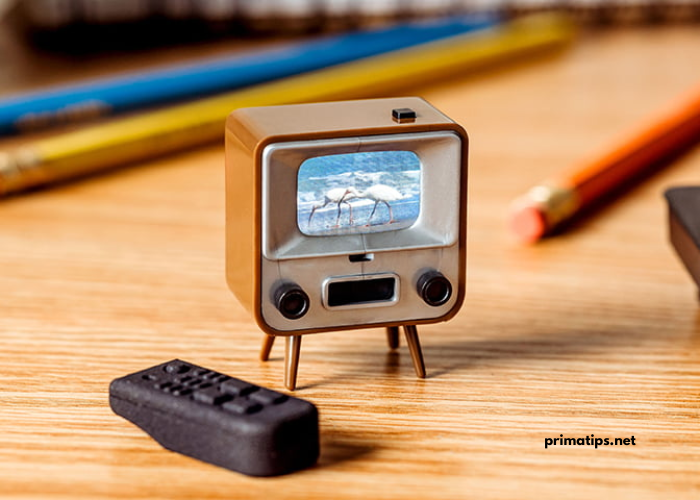Tech Gadgets Revolutionizing Life in 2025
The year 2025 is fast approaching, and the world of technology is witnessing a rapid transformation. Gadgets that were once considered science fiction are now becoming part of our daily lives, drastically altering the way we work, communicate, and live. From AI-driven devices to virtual reality advancements, the tech gadgets revolutionizing life in 2025 promise to push the boundaries of innovation. In this article, we will explore some of the most significant tech gadgets that are poised to revolutionize our lives in the coming years.
The Rise of Artificial Intelligence in Everyday Gadgets
AI-Powered Personal Assistants
In 2025, personal assistants powered by artificial intelligence will have evolved to a point where they can perform tasks far beyond what we imagine today. These devices, integrated with natural language processing and deep learning algorithms, will be able to anticipate your needs, offer personalized recommendations, and handle complex daily tasks with ease.
AI-powered personal assistants will become increasingly intuitive, understanding context and user preferences. Whether you’re managing your schedule, controlling your home environment, or working on projects, these devices will streamline every aspect of your life. The AI will learn from user behaviors, continually improving and adapting to meet personal requirements.
Smart Wearables for Health Monitoring
In 2025, wearables will be more than just fitness trackers—they will be indispensable health devices. Powered by advanced AI algorithms, these gadgets will monitor health metrics such as heart rate, blood pressure, and even mental health indicators. Continuous health tracking will allow wearables to offer personalized insights, helping users maintain an optimal lifestyle.
These smart wearables will also be capable of detecting early signs of illnesses and alerting users or healthcare professionals in real-time. Imagine a wristband that detects the early onset of a heart attack or a smartwatch that can monitor blood glucose levels for diabetics. These advancements will save lives and provide a proactive approach to personal health.
The Emergence of Augmented Reality (AR) and Virtual Reality (VR) Gadgets
Immersive VR Experiences
Virtual reality (VR) is expected to reach unprecedented levels of immersion in 2025. VR headsets will be lighter, more affordable, and capable of offering more realistic experiences than ever before. These devices will be used not only for entertainment but also in education, healthcare, and remote work environments.
In the realm of gaming, VR will create fully immersive worlds that will blur the lines between the virtual and real. Imagine stepping into your favorite game, where you can interact with characters and explore the world around you as if you were physically there. For education, VR will offer a platform where students can take virtual field trips to historical sites, explore the human body, or experience scientific concepts firsthand.
AR-Powered Gadgets for Everyday Tasks
Augmented reality (AR) gadgets are also set to revolutionize life in 2025. Unlike VR, which immerses users in entirely virtual environments, AR enhances the real world by overlaying digital information. In 2025, AR glasses will become a common sight in both the professional and personal lives of users.
Imagine walking into a grocery store with AR glasses that instantly display product prices, nutritional information, and customer reviews as you browse. In the workplace, AR technology will assist employees in performing complex tasks by displaying useful information and guides directly in their line of sight. The use of AR will enhance productivity, simplify tasks, and provide a more engaging user experience.
The Growth of Smart Homes and IoT Devices
Seamless Home Automation
Home automation has already begun to reshape our living spaces, but in 2025, it will reach new heights. Smart homes will be powered by an intricate network of Internet of Things (IoT) devices that communicate with each other seamlessly. From controlling the lights, temperature, and security systems to managing appliances and entertainment devices, everything will be interconnected.
In 2025, home automation systems will be powered by AI, learning from users’ habits and preferences to automatically adjust settings for optimal comfort. For example, the system might automatically dim the lights and play soft music when it senses that you’re winding down for bed or adjust the thermostat when you leave for work to save energy.
Advanced Smart Security Systems
Security will also see significant advancements thanks to IoT devices. Smart cameras, doorbells, and locks will be able to identify faces, detect unusual behavior, and send real-time alerts to homeowners. These devices will be powered by advanced AI, enabling them to distinguish between regular and suspicious activities, reducing false alarms.
In 2025, security systems will be able to integrate with emergency services, alerting authorities directly in case of a break-in, fire, or medical emergency. The combination of AI and IoT will provide peace of mind, ensuring that our homes are protected 24/7.
Autonomous Vehicles and Smart Transportation
Self-Driving Cars
In 2025, the dream of autonomous vehicles will be closer to reality. Self-driving cars, powered by AI and advanced sensors, will become a common sight on the roads. These vehicles will not only be safer but will also reduce traffic congestion and environmental impact by optimizing routes and reducing fuel consumption.
Autonomous vehicles will revolutionize the way we travel, making commuting more efficient and less stressful. In urban environments, self-driving taxis and rideshare services will replace traditional car ownership, providing users with convenient, eco-friendly, and cost-effective transportation options.
Smart Traffic Systems
Along with autonomous vehicles, smart traffic systems will reshape urban transportation in 2025. Powered by IoT and AI, these systems will manage traffic flow, reduce congestion, and minimize the risk of accidents. Traffic lights will adjust in real-time based on traffic conditions, while sensors embedded in roads will communicate with vehicles to provide real-time updates on the most efficient routes.
Smart transportation systems will also enhance public transportation, allowing for more precise scheduling, real-time tracking of buses and trains, and better passenger experience overall. The integration of these technologies will make transportation more seamless, eco-friendly, and efficient.
Advanced Robotics for Personal and Professional Use
Household Robots
Robots designed to assist with household chores will become more advanced and affordable by 2025. These robots will be capable of performing a wide range of tasks, from vacuuming and mopping to cooking and doing laundry. Powered by AI, these robots will be able to learn your preferences and adapt to your home’s specific needs.
Household robots will not only perform daily chores but will also act as personal assistants, offering help with tasks such as organizing, grocery shopping, and even childcare. These robots will allow users to free up their time for more important or enjoyable activities, transforming the way we manage our homes.
Professional Robots in the Workplace
Robotics will also continue to make strides in the workplace. In 2025, professional robots will assist in a wide variety of industries, from healthcare to manufacturing. In hospitals, robotic assistants will help with surgeries, patient care, and even administrative tasks, improving efficiency and patient outcomes.
In the manufacturing sector, robots will handle dangerous or repetitive tasks, allowing human workers to focus on more complex roles. These robots will not only increase productivity but will also improve workplace safety by taking on hazardous jobs.
The Impact of 5G and Beyond
Lightning-Fast Connectivity
5G technology will continue to expand in 2025, providing lightning-fast internet speeds and a more reliable connection for a range of devices. With 5G, the latency in communication between devices will drastically decrease, enabling a seamless experience for everything from streaming high-definition content to playing online games in real-time.
This ultra-fast connectivity will enable new technologies such as smart cities, connected vehicles, and autonomous robots to operate at full capacity. In addition, the rollout of 5G will enable remote work and telemedicine to reach new heights, allowing for more efficient communication and collaboration across the globe.
Enhanced Virtual and Remote Experiences
In 2025, 5G will play a crucial role in enhancing virtual and remote experiences. Whether it’s attending virtual meetings, enjoying a concert from the comfort of your home, or collaborating on a project with colleagues worldwide, the improved connectivity will make these experiences feel more authentic and immersive.
Conclusion: Embracing the Future of Technology
As we move into 2025, technology will continue to evolve at an astonishing rate. The gadgets revolutionizing our lives—from AI-powered assistants and immersive VR experiences to smart homes and autonomous vehicles—will have a profound impact on how we live, work, and play. By embracing these advancements, we can look forward to a more efficient, connected, and sustainable future, where technology works seamlessly to improve our quality of life.
By staying informed and adapting to these new gadgets, we’ll be better equipped to navigate the future and make the most of the incredible innovations that are transforming the world around us. Whether you’re an early adopter or a curious observer, the tech gadgets revolutionizing life in 2025 are sure to leave a lasting impression on the way we interact with the world.













